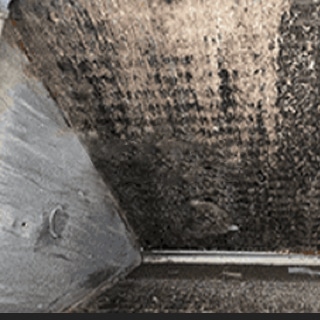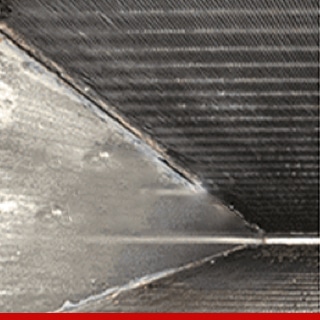How Can Air Handler Sanitizing Benefit My Business?
It’s easy to forget how hard your air ducts work to keep your commercial properties comfortable. Air handler sanitizing is a great way to alleviate some of the stress placed on your HVAC systems by helping them run as efficiently as possible and keeping them free of harmful contaminants.
What Is Air Handler Sanitizing?
Air handler sanitizing is the process through which commercial HVAC technicians deep clean your heating and cooling equipment’s evaporator coils. Using a one-step, hospital-grade germicidal disinfectant cleaner, furnaces, and air conditioners are disinfected and protected from mold and mildew growth.
After the evaporator coils have been thoroughly disinfected, your HVAC technician will restart the system to evaluate its operation and ensure optimal efficiency.

Before

After
Benefits of Air Handler Sanitizing for Commercial Properties
Having your air ducts professionally sanitized and disinfected can provide your business with many benefits, including:
Reduced operational costs: You won’t have to spend as much on energy since your HVAC systems will work more efficiently to meet your indoor comfort needs.
Increased cleanliness: Eliminating dust and debris lingering inside your HVAC systems can help reduce dustiness on surfaces throughout your building.
Improved air quality: Air handler sanitizing has been proven to kill germs and viruses such as SARS-associated coronaviruses, avian influenza, rhinovirus type 39, rotavirus, and many other airborne contaminants and contagions.
Extended system life span: Your heating and air conditioning equipment will last longer since they won’t have to work as hard to meet your comfort needs.
When To Schedule Commercial Air Handler Sanitizing Services
Most commercial HVAC providers recommend scheduling air handler sanitizing in the winter. Increased system use can cause energy costs to skyrocket in the colder months, so system efficiency is vital to maintaining operational costs. Additionally, cleaning your air ducts in the winter will help your business maintain access to fresh air without having to sacrifice indoor comfort.
Viruses also tend to thrive in colder weather, making the winter season a perfect time to combat airborne contaminants that may be hiding in your air handlers. And when spring rolls around, sanitizing and disinfecting your HVAC system can also help reduce allergy symptoms for your customers and employees.
AFGO Mechanical for Your Commercial Air Handler Sanitizing Needs!
If you’re interested in bringing the benefits of air handler sanitizing to your New York City business, AFGO Mechanical has the team you need. Our commercial HVAC specialists offer the comprehensive air handler sanitizing services that businesses need to reduce comfort costs, increase cleanliness, and improve indoor air quality in their buildings.
With state-of-the-art solutions across a wide variety of industries, there’s no better team for your commercial air duct cleaning needs than AFGO Mechanical. Call (718) 478-5555 to schedule air handler sanitizing today!


